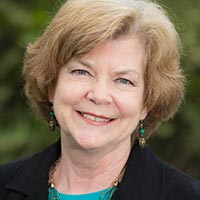There are smiles and facial expressions of deep concentration. There is a noisy hum of activity and you can hear laughter and a lot of discussion. There is movement and the room may look messy, but a creative project is clearly underway.
Designing projects that truly engage youth takes intentional planning. How do you create a climate that is social, creative, relevant and challenging? How do you build teamwork, communication and achievement?
Follow these seven steps to create an environment that promotes youth engagement:
- Prepare yourself to share power.
One of the biggest challenges in engaging youth lies within the adults themselves. Overcoming the resistance that has been ingrained in adults to take charge and control the situation is difficult. Adults need to make an internal shift in their thinking and behavior, to relinquish some of their power and authority and share it with the youth.
To begin, adults should have an honest desire to share power with the youth in their programs. Then gradually, instead of doing the planning, organizing and evaluating alone, adult leaders can take steps to involve the youth in all aspects of programming. If there is someone in a program who is good at sharing power with youth, ask him or her to mentor others in the process. - Build relationships with youth.
Getting to personally know each of the youth in an out-of-school time program might look different depending on the ages of the youth. For children in the upper elementary years, joining in a game, tossing a football or playing jump rope might help them see that adults enjoy their company. Asking questions and listening attentively may encourage older youth to open up and share their thoughts and feelings. Being a warm, affirming and consistent presence in the lives of youth builds trust. - Encourage exploration, discovery and self-expression.
The hallmark of the adolescent years is forming an identity. Youth at this stage may be trying out all sorts of ideas to see what fits. To do this effectively, they need to have many diverse experiences. Professionals should try to include as much variety and choice of activities as possible. This may mean learning about different cultures, religions, languages, food, art and celebrations. It may also mean trying out different types of games and sports or planning a field trip to introduce a new experience. - Instill the skills to make learning meaningful.
We want our youth to become lifelong learners. Being open, curious and interested in the world around them is what motivates children and youth to keep trying and learning new things. They also need skills to gain new knowledge. Reading and researching with a critical eye; gathering, sorting and synthesizing information from various sources; and giving clear and interesting presentations are all important skills that they will use throughout their lives. - Provide leadership opportunities.
Youth have a lot of ideas and they want to put their ideas into action. Having leadership opportunities gives them a chance to test out whether their ideas make sense and are useful to the community. Skilled professionals intentionally build discussions about leadership and age-appropriate practices that develop leadership skills into their curriculum. - Develop advanced skills.
Communication, collaboration, critical thinking and self-direction: These skills are what employers look for in hiring new workers. Out-of-school time professionals can work with youth in designing projects that build these four skills. Hands-on, group projects that are personally meaningful to youth and that include concrete goals, a timeline and an end product are ideal for developing these 21st-century skills. - Reflect and adjust the program to improve youth engagement.
As adult leaders, reflect and communicate regularly on what projects worked, why they were or were not successful, and how to adjust the program to keep improving youth engagement.
It takes knowledge, talent and experience to bring all these factors and resources into play to achieve true youth engagement. But the key element that makes all the difference is having solid youth-adult relationships. Spending time and energy getting to know and trust the youth in an out-of-school time program is the place to start.
Want to learn more about positive youth development topics and receive professional development credit? Penn State Better Kid Care in partnership with the University of Nebraska Extension provides free online professional development modules child care and school-age professionals can access anywhere, anytime. More than 120 hours of school-age professional development are available, including topics in PYD, SEL and STEM. These modules are approved for professional development in 48 states.
To access the modules, visit extension.psu.edu/youth/betterkidcare. There is no charge to read the content, view the videos, and download and print the activities. To take the assessment and receive a certificate of completion, you will be prompted to pay a $5 fee
 Eileen Wise is a youth development specialist at Penn State Better Kid Care and primary author of the PYD series.
Eileen Wise is a youth development specialist at Penn State Better Kid Care and primary author of the PYD series.




